We may not have the course you’re looking for. If you enquire or give us a call on +45 89870423 and speak to our training experts, we may still be able to help with your training requirements.
Training Outcomes Within Your Budget!
We ensure quality, budget-alignment, and timely delivery by our expert instructors.
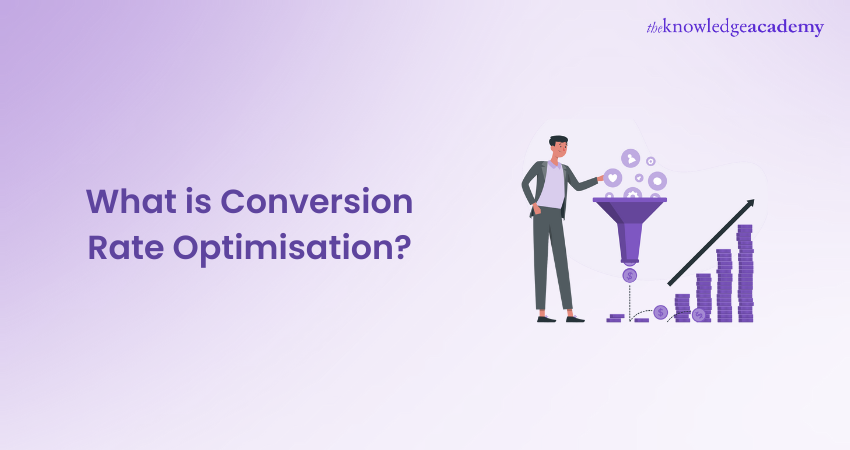
Are you looking to unlock your website’s full potential? Conversion Rate Optimisation (CRO) is the key to transforming visitors into customers. By analysing user behaviour, CRO enhances your website’s performance. Improving elements like design, content, and usability can significantly boost the percentage of visitors who complete desired actions.
Whether it’s making a purchase, signing up for a newsletter, or engaging with your content, CRO helps you achieve better results. In today’s competitive online market, understanding What is Conversion Rate Optimisation is essential for driving growth and increasing revenue. This blog will delve into the fundamentals of CRO and how it can benefit your business.
Table of Contents
1) What is Conversion Rate Optimisation?
2) Defining Conversion
3) Importance of Conversion Rate Optimisation
4) Key Elements of Conversion Rate Optimisation
5) Examples of Conversions
6) Conversion Rate Optimisation Process
7) How to Calculate Conversion Rate?
8) Where to Implement a CRO Strategy?
9) Conversion Rate Optimisation Strategies
10) Conclusion
What is Conversion Rate Optimisation?
CRO involves improving your website's performance by boosting the number of visitors who carry out particular actions, such as buying a product or submitting a contact form. The main goal is to enhance the user experience (UX) in order to increase conversions from your current website visitors.
CRO entails examining user behaviour, pinpointing areas of visitor drop-off, and experimenting with different modifications to boost conversion rates. This could involve improving website content, tweaking design features, or enhancing call-to-action (CTA) buttons to better align with user wants and anticipations.
Through the utilisation of CRO techniques, companies have the ability to greatly enhance their conversion rates without the need to increase website traffic. This method increases the worth of every visitor, converting a higher number of them into clients, and ultimately enhancing the overall business output.
Defining Conversion
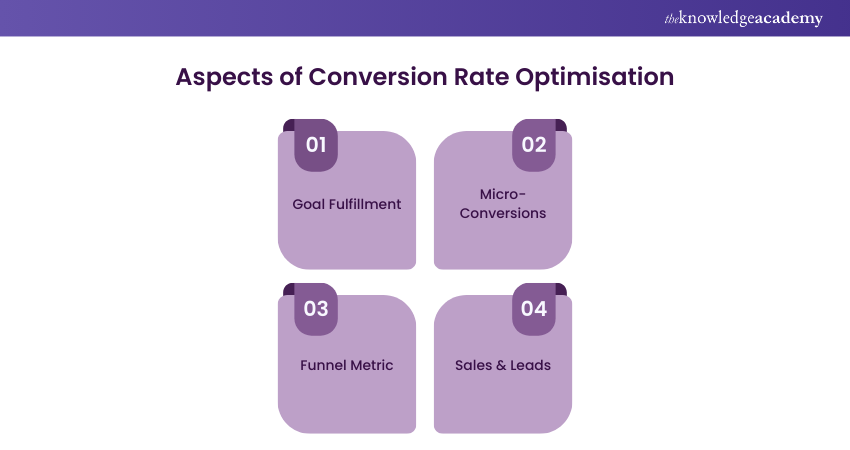
A Conversion refers to the overarching term for a visitor successfully accomplishing a goal on a website. Goals can vary in size and nature, and for those engaged in selling products through their website, the primary objective, also known as the macro-conversion, is for the user to make a purchase.
Additionally, there are smaller milestones known as ‘micro-conversions’ that may precede a macro-conversion, such as signing up for email notifications. The term ‘Conversion’ is employed when a recipient of a marketing message carries out a desired action. While Conversion is a vital metric within the marketing funnel, it doesn't exclusively denote a purchase; Conversions can occur before a sale, indicating progress in the sales funnel.
Depending on the objectives of your site or business, Conversion types may include online sales, leads, email signups, and form completions. To monitor Conversions, Conversion Rates, and cost per Conversion, it is imperative to implement Conversion tracking measures.
Importance of Conversion Rate Optimisation
Attracting new customers to your website is challenging, especially with competitors’ advertising. However, converting those visitors into leads or sales is even more critical. This process known as Conversion Rate Optimisation (CRO), is essential for maximising your website’s revenue potential.
CRO involves optimising every aspect of the user experience (UX) across various devices, with a significant focus on mobile. By improving usability, design, and page speed, businesses can enhance conversion rates. Additionally, collaborating with marketing teams to refine strategies and optimise landing pages further boosts conversions.
CRO is measured through tools like A/B testing, Google Analytics, and heat mapping. If you lack internal expertise, numerous agencies can audit and optimise your CRO efforts, ultimately increasing your revenues and profits.
Master the Art of Email Marketing with our Email Marketing Course – Join now!
Key Elements of Conversion Rate Optimisation
Conversion Rate Optimisation (CRO) involves several key elements that work together to effectively boost conversion rates:
1) User Experience (UX) Design:
An effectively planned user experience (UX) is essential for smoothly directing users across your website. Efficient UX design guarantees users can easily locate desired items, minimising barriers and boosting conversion rates.
2) A/B Testing:
A/B testing enables you to test various versions of your website pages to discover which one is more effective. By consistently experimenting with components such as headings, visuals, and prompts for action, you can enhance your website to increase the number of visitors who become buyers.
3) Page Speed Optimisation:
Quickly loading pages are crucial for keeping visitors engaged. Slow page loading can annoy users and result in increased bounce rates. Improving load times increases the likelihood that visitors will remain interested and successfully take desired actions.
4) Mobile Responsiveness:
Ensuring that your website is mobile-friendly is crucial now that most web traffic is coming from mobile devices. A responsive design adjusts to various screen sizes, ensuring a seamless user experience (UX) that boosts conversions on all devices.
5) Data Analysis:
Utilising tools such as Google Analytics enables you to comprehend user interactions with your website. Examining this data uncovers opportunities for enhancement, enabling you to make educated choices that bolster your CRO plan in the long run.
Examples of Conversions
Conversions are of two key types:
a) Micro-conversions: Users can perform Micro-conversions such as registering for email newsletters, setting up an account, or adding a product to the shopping cart.
b) Macro-conversions: Customers can engage in Macro-conversions by either purchasing a product on the website, requesting a price estimate, or subscribing to a service.
What is the Average Conversion Rate?
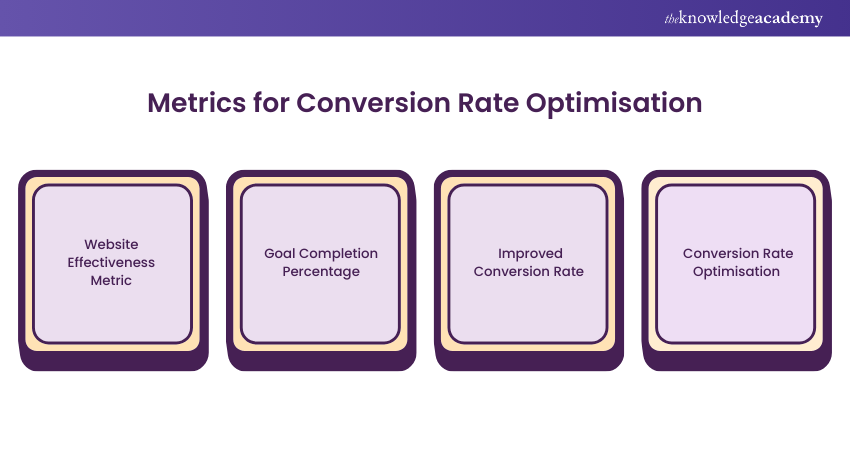
The average Conversion Rate is an important metric in digital marketing that measures the success rate of a website or campaign in converting visitors into desired actions, such as making a purchase or completing a form.
It represents the percentage of visitors who complete a specific goal out of the total number of visitors to a site or landing page within a given period. A higher average Conversion Rate indicates greater efficiency in converting visitors into customers or leads, reflecting the success of marketing strategies and the user experience (UX). Analysing and optimising the average Conversion Rate is crucial for enhancing business performance and maximising ROI.
Build exceptional Marketing Skills with our Introduction To Marketing Training – Sign up today!
Conversion Rate Optimisation Process
The Conversion Rate Optimisation (CRO) process is a step-by-step approach to enhancing your website's performance by boosting the percentage of visitors who complete desired actions. Let’s discuss further:
Step 1: Recognise Important Conversions
Conversions are the particular steps you desire for users to complete, and these steps will differ depending on your business objectives. In the case of an online store, a conversion could be a successful purchase; while for a SaaS business, it could be registering for a complimentary trial. After pinpointing the desired action, the objective is to maximise the speed at which visitors accomplish this action, referred to as your 'conversion rate.'
Step 2: Examine Your Conversion Funnel
Analyse every step of your conversion funnel to pinpoint where visitors exit before completing a conversion. This technique, called funnel analysis, identifies pages with high exit rates and uncovers reasons for user departures. Hotjar Funnels is a tool that can display the flow of traffic, allowing you to examine each step and categorise users based on demographics or traffic sources to customise your strategy.
Step 3: Collect Information from Users
Once you have pinpointed the main locations for drop-offs, gather specific details about your users. It is important to comprehend user behaviour because some conversion blockers are not easily identifiable or measurable. Certain problems could be easy to solve, such as a glitch, whereas others necessitate a more thorough examination of what users require, concentrating on the factors that shape their choices.
Step 4: Formulate Hypotheses
Based on the information collected, formulate hypotheses regarding adjustments to be made in your funnel in order to increase conversion rates. This stage consists of determining which characteristics to incorporate, modify, or eliminate. Conversion Rate Optimisation (CRO) involves continuous refinement; don't stress if initial efforts are not flawless as testing will improve your tactics.
Step 5: Test Your Hypotheses
By putting your hypotheses to the test through the implementation of data-driven optimisations, you can work towards boosting conversion rates. Testing multiple versions of web pages through A/B testing is a successful way to assess new UX designs and sales funnel flows. Utilising both quantitative and qualitative metrics will provide a comprehensive insight into which adjustments are most impactful.
Step 6: Evaluate and Repeat
Always monitor how your tested alterations affect conversion rates. As you continue the process, conversion rates will gradually get better. Consistently check your funnel to pinpoint areas requiring additional focus. Platforms such as Hotjar Dashboards offer a comprehensive look at your CRO metrics, enabling you to focus on particular session recordings, heatmaps, or user feedback for improving ongoing optimisations.
How to Calculate Conversion Rate?
Consider a scenario where a user has the potential to convert during each visit to the website. For instance, imagine having an e-commerce platform like Roger's Robotics, where users could initiate a purchase with every session.
The objective is to optimise the site to encourage multiple Conversions per user. If a user visits the site on three separate occasions, it equates to three distinct sessions, presenting three distinct opportunities for Conversion. Now, let's explore the user's behaviour across these three sessions:
a) Session 1: The user did not convert; instead, they seemed to be acquainting themselves with the site, exploring various sections.
b) Session 2: The user successfully completed a purchase, acquiring a shiny new antenna, marking it as a Conversion.
c) Session 3: The user returned to the site and made another purchase, this time acquiring a new set of gears and a blinking light, constituting another Conversion. Despite purchasing two items, this transaction is considered a single unique order and, therefore, counts as a single Conversion instance.
Where to Implement a CRO Strategy?
Implementing a Conversion Rate Optimisation (CRO) strategy offers the opportunity to systematically enhance website performance, boosting the percentage of visitors who complete desired actions.
By analysing user behaviour, testing hypotheses, and refining elements, businesses can optimise Conversions, ultimately improving ROI and enhancing overall digital marketing effectiveness:
a) Homepage
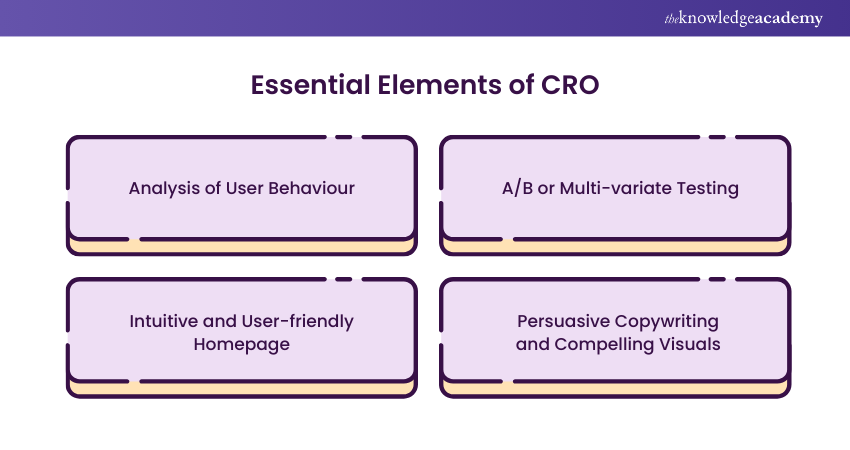
Implementing a Conversion Rate Optimisation (CRO) strategy on a homepage involves several key steps. Firstly, it's essential to analyse user behaviour using tools like heatmaps, scroll maps, and session recordings to identify areas of friction or drop-off points.
Next, conduct A/B testing or multivariate testing to experiment with different elements such as headlines, call-to-action buttons, or navigation menus. Additionally, ensure the homepage design is intuitive and user-friendly, with clear pathways to desired actions like product purchases or newsletter sign-ups.
Optimising the homepage for mobile responsiveness is crucial given the increasing use of smartphones for browsing. Incorporating persuasive copywriting and compelling visuals can also enhance engagement and Conversion Rates. Regularly monitor and analyse performance metrics such as bounce rate, time on page, and Conversion Rate to gauge the effectiveness of implemented changes.
By continuously refining and iterating on homepage elements based on data-driven insights, businesses can improve user experience, increase Conversions, and ultimately drive growth and revenue.
b) Pricing Page
Implementing a Conversion Rate Optimisation (CRO) strategy on a pricing page involves strategic adjustments to maximise user engagement and encourage Conversions. Initially, conduct thorough research to understand user preferences, pain points, and expectations regarding pricing information.
Ensure that the pricing page is easy to navigate, with clear and transparent pricing structures presented in a visually appealing format. Experiment with different pricing models, such as tiered pricing, discounts, or subscription options, to determine the most effective approach for your target audience.
Utilise persuasive copywriting techniques to highlight the value proposition of your products or services and address potential objections. Incorporate social proof elements such as customer testimonials, case studies, or trust badges to build credibility and trust.
Implement A/B testing to compare variations of the pricing page layout, design elements, and messaging to identify what resonates best with users. Continuously monitor and analyse key performance metrics such as Conversion Rate, bounce rate, and average order value to assess the effectiveness of your CRO efforts and make data-driven optimisations accordingly.
c) Blog
Implementing a Conversion Rate Optimisation (CRO) strategy on a blog involves optimising various elements to enhance user engagement and encourage desired actions. Begin by analysing user behaviour, such as time spent on a page, scroll depth, and click-through rates, to identify areas for improvement.
Ensure that the blog layout is user-friendly, with clear navigation and intuitive categorisation to help visitors find relevant content easily. Experiment with different content formats, headlines, and visuals to capture and maintain reader interest.
Incorporate compelling calls-to-action (CTAs) strategically within blog posts to encourage further engagement, such as subscribing to a newsletter, downloading a resource, or exploring related content. Utilise lead magnets, such as gated content or email sign-up incentives, to capture visitor information and nurture leads.
d) Landing Pages
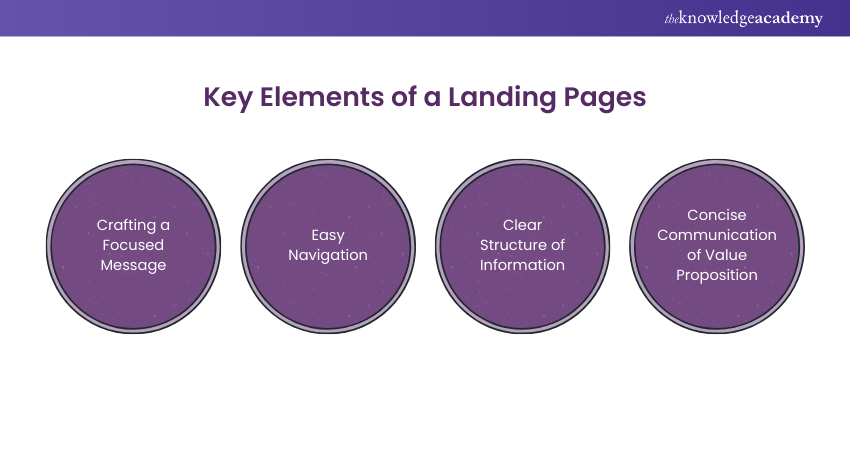
Implementing a Conversion Rate Optimisation (CRO) strategy on a landing page involves crafting a compelling, focused message that resonates with the target audience. Design the page layout to be clean, visually appealing, and easy to navigate, with a clear hierarchy of information and prominent calls-to-action (CTAs).
Use persuasive copywriting techniques to communicate the value proposition concisely and address visitor’s pain points. Employ A/B testing to experiment with different headline variations, imagery, CTA placement, and forms to optimise Conversion Rates.
Continuously analyse performance metrics such as bounce rate, Conversion Rate, and form submissions to identify areas for improvement and make data-driven optimisations to enhance overall effectiveness and drive desired actions.
Reach your audience anytime, anywhere with our Mobile Marketing Course today!
Conversion Rate Optimisation Strategies
Conversion Rate Optimisation (CRO) strategies encompass a range of tactics aimed at increasing the percentage of website visitors who take desired actions. These strategies include A/B testing, optimising website usability, improving content relevance, enhancing call-to-action (CTA) effectiveness, implementing persuasive copywriting, and utilising data analysis to inform decision-making and drive continuous improvement.
a) Create Text-based CTAs Within Blog Posts
Creating text-based call-to-actions (CTAs) within blog posts involves crafting compelling prompts that urge readers to take desired actions. These CTAs should be clear, concise, and aligned with the blog's content and purpose.
Additionally, they can boost engagement by inviting readers to leave comments, share the post on social media, subscribe to newsletters, or explore related content. . Incorporating persuasive language and offering incentives or benefits can increase the effectiveness of text-based CTAs. Regularly testing different CTAs and analysing their performance allows for refinement and optimisation to drive higher Conversion Rates and achieve specific blogging goals.
b) Add Lead Flows on Your Blog
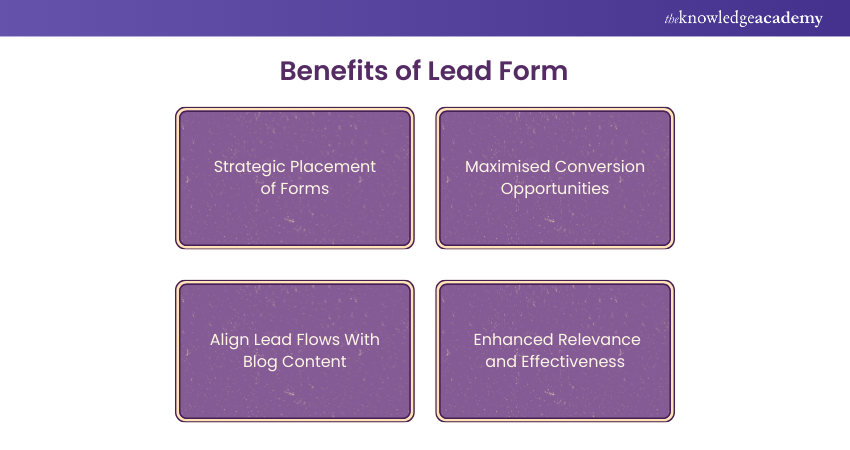
Adding lead flows on blogs involves strategically placing pop-up forms to capture visitor information and convert them into leads. These forms can offer valuable resources, such as eBooks or guides, in exchange for email subscriptions.
Lead flows should be timed to appear when visitors are most engaged or about to exit the page, maximising Conversion opportunities without disrupting the user experience. Tailoring lead flows to match the blog's content and audience interests enhances relevance and effectiveness. Regularly analysing metrics like Conversion Rates and subscriber growth enables optimisation for better engagement and lead generation on the blog.
c) Run Tests on Your Landing Pages
Running tests on landing pages is essential for optimising performance and maximising Conversions. A/B testing involves creating variations of elements like headlines, images, or CTAs and comparing their effectiveness in achieving desired outcomes.
Multivariate testing expands on this by testing multiple elements simultaneously. These tests provide valuable insights into visitor preferences and behaviour, helping to refine landing page design and messaging for improved engagement and Conversion Rates.
Continuous testing and analysis allow for iterative improvements, ensuring that landing pages are optimised to effectively drive user actions and achieve business goals.
d) Help Leads Become MQLs
Leads can transition into Marketing Qualified Leads (MQLs) through various nurturing strategies. This involves engaging leads with targeted content tailored to their specific needs and interests, gradually guiding them through the sales funnel.
Providing valuable resources, personalised communication, and timely follow-ups can build trust and credibility, increasing the likelihood of Conversion. Implementing lead scoring mechanisms based on demographic data, behaviour, and engagement levels helps identify MQLs ready for sales team engagement.
By aligning marketing efforts with sales objectives and continuously evaluating lead quality, businesses can effectively nurture leads into MQLs and ultimately drive revenue growth.
e) Build Workflows to Enable Your Team
Workflows are crucial for enabling project teams to streamline processes and achieve objectives efficiently. By mapping out sequential steps and assigning responsibilities, workflows ensure clarity and accountability.
Utilising project management tools and automation software, teams can automate repetitive tasks, set reminders, and track progress in real-time. Establishing clear communication channels and defining approval processes within workflows fosters collaboration and ensures everyone is aligned with project goals.
Regular review and optimisation of workflows based on feedback and performance metrics enable continuous improvement and enhance team productivity, ultimately leading to successful project execution.
f) Add Messages to High-converting Web Pages
Implement live chat software to engage with website visitors in real time, providing instant support and guidance as needed.
To boost conversions, integrate messaging features on high-traffic pages, such as pricing and product pages, ensuring leads receive timely information.
Additionally, make your messaging and chatbots action based. For example, if a visitor spends over a minute on a page, automatically aid address their questions. A live chat tool can simplify this process.
g) Optimise High-performing Blog Posts
Publishing blog articles offers a significant opportunity for conversions, especially if you already have existing content.
To optimise your blog content, start by identifying posts with high web traffic but low conversion rates. This issue could be due to SEO, the content offer, or your CTA.
Additionally, focus on blog posts with high conversion rates. Drive more qualified traffic to these posts by optimising them for search engine results or updating the content to keep it fresh and relevant.
h) Leverage Retargeting to Re-engage Website Visitors
Regardless of your key conversion metric, most visitors to your website don’t take the desired action. However, by leveraging retargeting on platforms like Facebook, you can re-engage those who left without converting.
Retargeting works by tracking website visitors and displaying targeted ads as they browse other sites. This approach is particularly effective when targeting individuals who visited your highest-converting pages. To succeed, you’ll need well-crafted copy, engaging visuals, and a compelling offer.
Conclusion
In conclusion, understanding “What is Conversion Rate Optimisation” is crucial for enhancing your website’s performance. By systematically analysing user behaviour, testing strategies, and refining your approach, you can significantly boost conversion rates. Effective CRO involves continuous improvement and a focus on user experience (UX), ultimately driving better results and maximising your online potential. Embrace these practices to turn more visitors into loyal customers and achieve your business goals.
Maximise your conversions with our Marketing Courses – Register now!
Frequently Asked Questions

Conversion Rate Optimisation (CRO) involves enhancing a website in a structured manner to boost the number of visitors who engage in desired activities, such as buying a product or filling out a form. It improves user satisfaction, increases conversions, and enhances revenue and profitability.

The effectiveness of a Conversion Rate Optimisation (CRO) plan is influenced by variables such as website intricacy and amount of traffic. Some businesses may experience rapid improvements, while others might need more time to notice notable changes.

The Knowledge Academy takes global learning to new heights, offering over 30,000 online courses across 490+ locations in 220 countries. This expansive reach ensures accessibility and convenience for learners worldwide.
Alongside our diverse Online Course Catalogue, encompassing 17 major categories, we go the extra mile by providing a plethora of free educational Online Resources like News updates, Blogs, videos, webinars, and interview questions. Tailoring learning experiences further, professionals can maximise value with customisable Course Bundles of TKA.

The Knowledge Academy’s Knowledge Pass, a prepaid voucher, adds another layer of flexibility, allowing course bookings over a 12-month period. Join us on a journey where education knows no bounds.

The Knowledge Academy offers various Marketing Courses, including Introduction to Marketing Training, Email Marketing Course, Web Analytics Course and more. These courses cater to different skill levels, providing comprehensive insights into the What are Campaign Objectives.
Our Digital Marketing Blogs covers a range of topics related to Conversion Rate Optimisation, offering valuable resources, best practices, and industry insights. Whether you are a beginner or looking to advance your Digital Marketing Skills, The Knowledge Academy's diverse courses and informative blogs have you covered.
Upcoming Digital Marketing Resources Batches & Dates
Date
 Conversion Rate Optimisation Training
Conversion Rate Optimisation Training
Fri 21st Feb 2025
Fri 25th Apr 2025
Fri 20th Jun 2025
Fri 22nd Aug 2025
Fri 17th Oct 2025
Fri 19th Dec 2025







 Top Rated Course
Top Rated Course



 If you wish to make any changes to your course, please
If you wish to make any changes to your course, please


